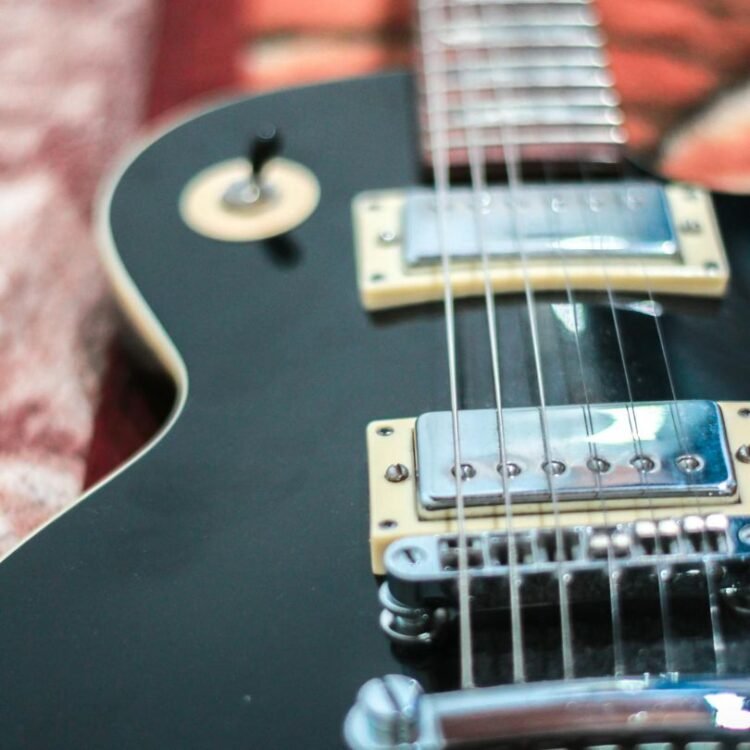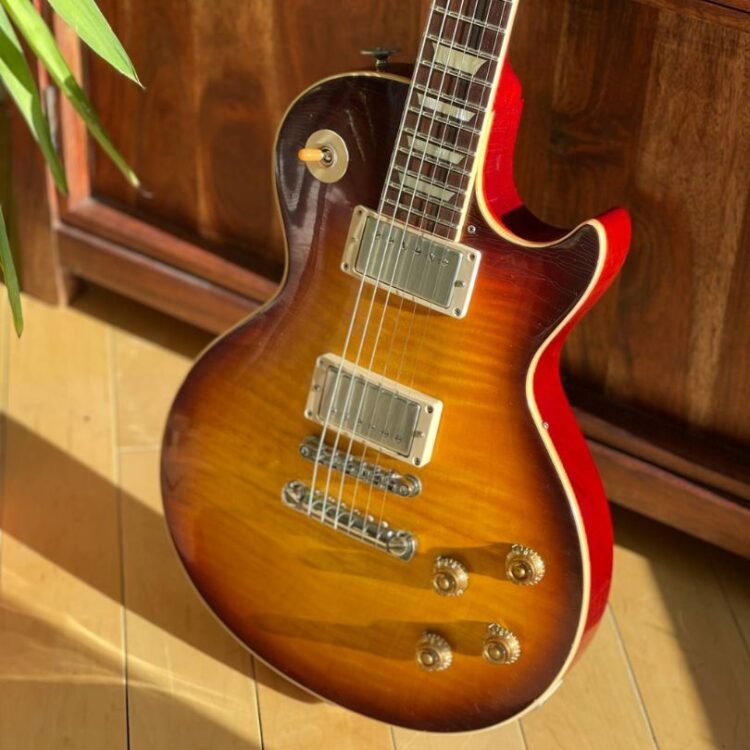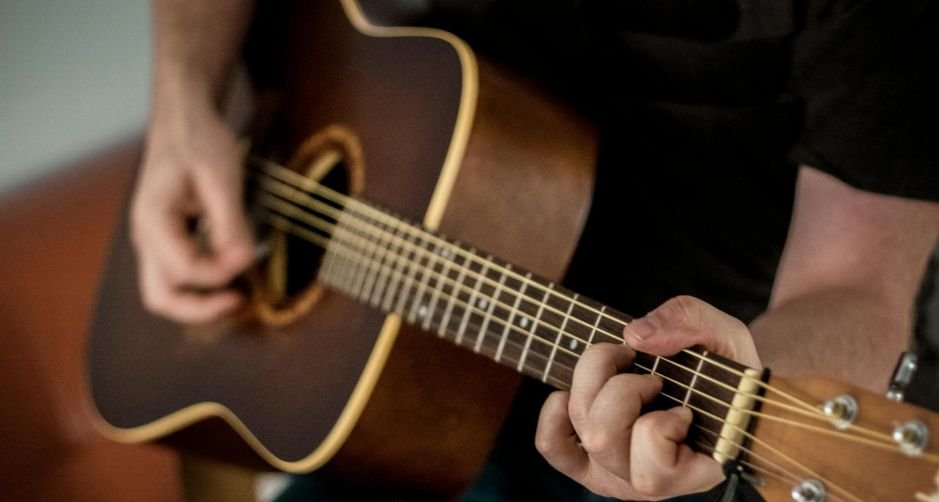Music makers who play guitars usually fixate intensely on pickups, amps, and pedal effects.
A guitar bridge silently controls your tone quality and playing abilities despite remaining hidden beneath the guitar strings.
The guitar bridge connects musical concepts to the world through its crucial function and controls sustained alongside intonation.
The guitar bridge shapes your music in specific ways, yet most players overlook its importance, which deserves enhanced focus.
What Exactly Does a Guitar Bridge Do?
The guitar’s body uses the guitar bridge to anchor all its strings. It serves three important functions:
- The bridge is a secure mechanism to keep strings positioned correctly with proper tension.
- The bridge is a transfer point for string vibrations, enabling the body to produce sustained, resonant sound.
- The bridge maintains guitar intonation on the fretboard through saddle adjustments, which affect string height to produce different playability characteristics.
Your guitar bridge’s role in music production goes far beyond its basic purpose because it determines the vital elements of sound and musical feel.
No matter which guitar style you play, the bridge remains unseen while it performs its role in shaping your overall musical experience.

Types of Guitar Bridges and Their Impact on Tone
Every guitar bridge design differs from the others. The bridge selection for your guitar substantially changes your playing performance and tonal quality.
Different types of bridges affect your musical output in specific ways, according to the following list.
1. Fixed Bridge (Hardtail)
The main strength is their basic design, which creates impeccable tuning stability.
These bridges deliver outstanding sustain and resonance by maintaining a secure attachment to the body.
Guitars with Gibson Les Paul and Fender Telecaster models benefit from these bridges because their tuning consistency makes them suitable for blues, jazz and heavy rock musical styles.
These bridges enhance natural musical sounds, allowing notes to generate beautiful, sustained tones.
They offer superior tuning reliability, which works best with demanding chord patterns and harmonic bends.
However, this bridge’s restricted vibrato capabilities might disappoint players who perform whammy bar tricks.
2. Tremolo Bridge
The tremolo bridge, also known as the floating bridge, features a mechanism called the whammy bar that raises or lowers string pitch.
Stratocaster Fender models feature these bridges, which musicians primarily use in surf rock and metal solos.
Vibrato effects and dive bombs will enhance your expressive playing. However, sustain suffers slightly because of the floating bridge structure, which hinders resonance.
The system requires additional skill to maintain stable tones, which becomes difficult during intense whammy bar activities.
3. Floyd Rose Locking Tremolo
The double-locking mechanism has become popular among guitarists who play rock and metal.
The dual locking system maintains string stability through both nut and bridge points while you use the extreme whammy bar.
Through extreme pitch modulation, a guitar player can achieve extreme dive bomb effects and scream high-pitched notes.
The mechanism maintains perfect tuning stability regardless of high-string bending frequencies.
However, the setup process for beginners proves difficult because it demands complex operations and restringing tasks.

Tune-O-Matic Bridge
The Tune-O-Matic bridge, which Gibson guitars commonly use, enables users to achieve precise intonation adjustment.
The saddles on this bridge can be adjusted to perfect string length for maintaining precise pitch throughout the entire fretboard.
The anchored structure provides excellent sustain and resonance capabilities to the instrument.
The bridge, which functions as a static bridge element, maintains a constant pitch position.
How the Guitar Bridge Affects Playability
The guitar bridge determines the feel of playing and sustains the tone quality. Two key aspects are affected:
Action (String Height)
Each bridge position establishes the string distance from the fretboard surface, which musicians call action.
When the action is low, the guitar strings become easier to press, enabling quick execution of solos and complex chords.
However, the strings will buzz when the string height is too low. Guitar players can produce more dynamic sounds with higher action, which demands enhanced finger strength to play effectively.
Intonation
Each note in your scale will stay in tune when you move toward the neck as a result of intonation.
The saddles on the bridge enable users to modify string length for precise pitch tuning.
The intonation quality determines the chords’ tuning, even when the open strings remain perfectly tuned.
Upgrading Guitar Bridge
A guitarist who has played for some time and wants to improve their tone should consider replacing the guitar bridge system.
Does the expense justify making this purchase? The decision depends on what you need in your playing and your specific musical approach.
A high-quality bridge replacement offers these advantages to players as:
The premium locking bridges from Floyd Rose and Schaller systems maintain guitar tuning accuracy when playing tremolo-heavy sections.
After installing brass or titanium bridges, your musical notes will sound richer and more sustained because they enhance both resonance and sustained duration.
Spending in a floating or double-locking tremolo bridge enables you to explore new creative musical options, which include dive bombs and vibrato effects together with dynamic pitch shifts.
Famous Guitarists and Their Bridges
People are curious about how the guitar bridge influences the distinctive sounds created by famous guitarists. Here are a few examples:
- Jimi Hendrix became famous through his performance of Fender Stratocaster tremolo bridge effects that resulted in signature dive-bomb riffs and expressive vibrato.
- Eddie Van Halen perfected the Floyd Rose locking tremolo system while developing both tapping methods and intense tone variations.
- Jimmy Page achieved his signature rock solos using the Tune-O-Matic bridge on his Gibson Les Paul to produce sustained tones.
- Different bridge choices serve as visual indicators that help musicians match their distinctive musical style to their desired sound.
Conclusion
Guitar bridges serve structural requirements and significantly impact tone quality, playing capability, and artistic expression.
Your sound will either excel or fail depending on which bridge you select. The bridge determines your sustain quality and ability to play in tune or dramatically alter pitches.
When you play your guitar, pause to acknowledge the bridge as the component that turns your music into a living sound.
Try various bridge types, then modify them slightly until you discover the configuration that aligns with your playing technique.


